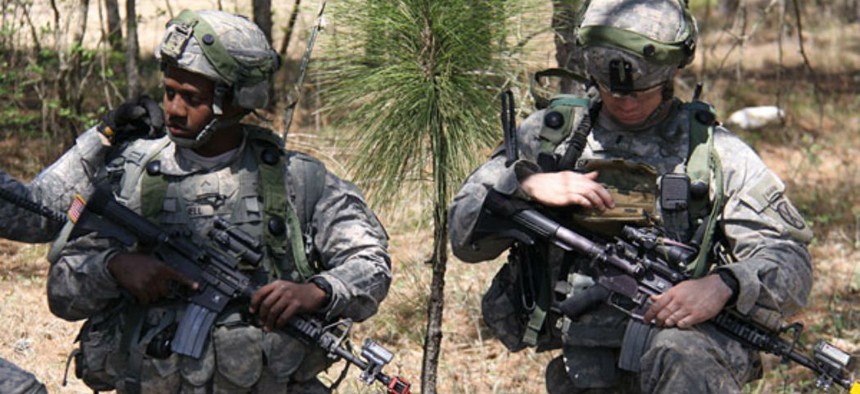
Firm develops rugged navigation device for a GPS-denied environment
The Army and DOD are working with industry to engineer networking technologies able to connect combat forces in an environment where GPS systems are jammed or disabled.
Industry is working with DOD and the Army to develop navigation technologies able to function in a GPS-denied environment where satellite signals are compromised or unable to function in some way due to enemy activity or technical malfunctions.
There is a broad consensus among military developers and industry innovators that far too many necessary combat technologies are reliant upon GPS systems, Weapons targeting, ship navigation and even small handheld solider force-tracking systems all rely upon GPS signals to operate. As a result there is increased focus within the military community on combat technologies that can provide what the military calls precision, navigation and timing for a wide range of systems.
One such technology under development is an Orolia-developed device called Versa PNT (precision, navigation and timing).
“You may not be aware of how susceptible GPS signals are to jamming or spoofing. The whole issue of interference, detection and mitigation is the focus of our technology,” said Mark Cianciolo, regional vice president for the Americas, Orolia.
The technology comes in a ruggedized box designed to mount on vehicles, drones and other mobile platforms that network combat forces. The device uses encrypted RF signals to both detect and mitigate potential jamming or interference – all while providing key navigation and timing systems for mounted and dismounted units. The Army’s mobile Blue-Force Tracker, for example, is a GPS-reliant system, which provides friendly and enemy force-tracking technology
Orolia is currently working on a prototype Versa for dismounted soldiers, Cianciolo said.
It functions like a Wave Relay (Persistent Systems technology) network with each device able to both transmit and function as a router or node. It uses an iridium receiver and inertial measurement technology to provide guidance, navigation and timing, Cianciolo said. The receiver is a small antenna, which receives RF frequencies. This kind of Wave Relay networking is also being successfully developed by the Army for subterranean combat, allowing soldiers to conduct combat operations underground.
“When you look at our solution in an environment where the timing is jammed, we’ve built in several redundant critical timing solutions,” he added. “Our new Versa product is the only fully integrated flexible platform of its kind that delivers comprehensive PNT solutions. The signal is fully encrypted.”
The Versa PNT system is entirely consistent with existing Army terrestrial, ad hoc software programmable radio networks designed to relay combat-relevant voice, data and video technology across a force in real-time.
These networks, currently used by Army soldiers to connect the handheld Rifleman Radio, operate in an environment without a fixed infrastructure such as a cell tower or satellite network. Rifleman Radio, used by Army Rangers in Afghanistan in recent years, uses the high-bandwidth Soldier Radio Waveform to transmit info across the force. A software programmable network is based upon the premise that each node or radio on the system functions as a router as well as something which transmits.
Versa PNT is also designed in a small, four-and-a-half inch form factor to ultimately enable use with dismounted soldiers as well as vehicles, drones or other platforms.